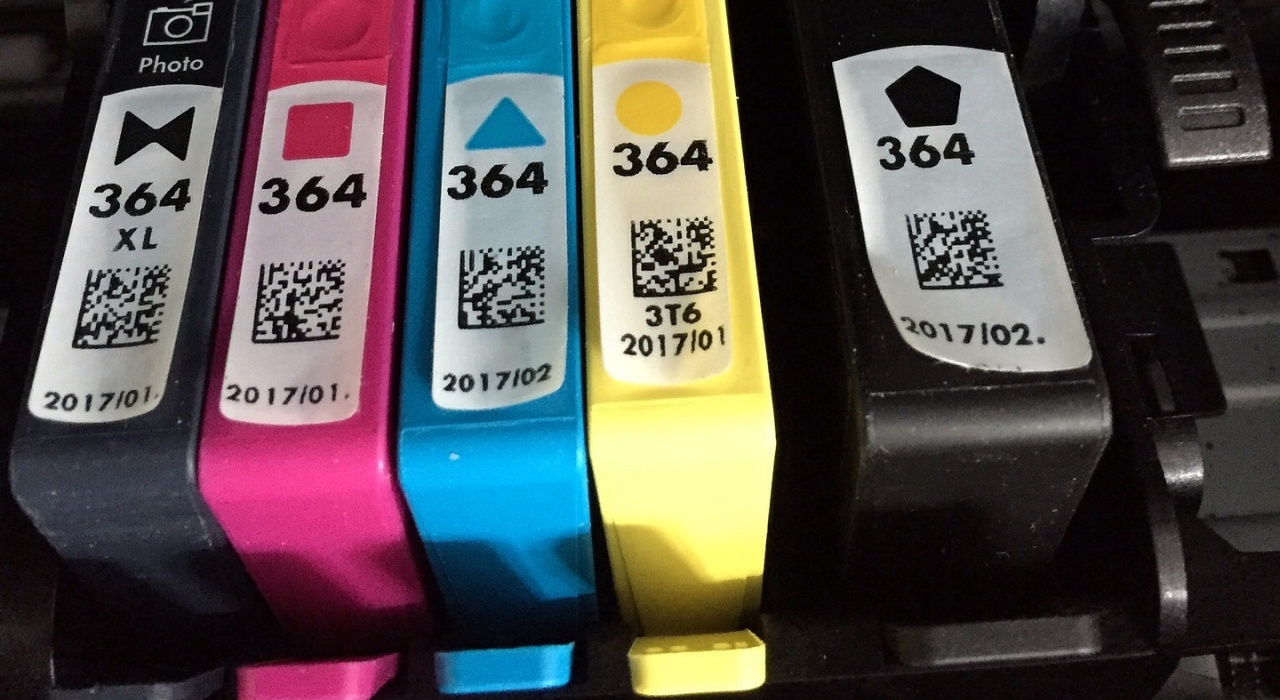
In Ex parte Jung (Appeal No. 2021-003163), the examiner rejected the claims as obvious based on an inherency rationale. The PTAB reversed.
Independent claim 16 recited an inkjet set consisting of:
a black inkjet ink, a cyan inkjet ink, and two inkjet inks A and B… wherein
the inkjet ink A has a hue angle H* between 70 and 85 and a chroma C* between 30 and 80;
the inkjet ink B has a hue angle H* between 20 and 40 and a chroma C* between 30 and 80 …
The dispositive issue on appeal was whether the hue angle H* and chroma C* were inherent in the applied art.
The examiner cited a reference broadly disclosing mixtures of pigments, and including the specific pigments C.I. Pigment Orange 71, C.I. Pigment Yellow 139, C.I. Pigment Red 254, and C.I. Pigment Red 122 among a long list of suitable pigments. The examiner noted that these specific pigments were recited in the applicant’s dependent claims 19 and 21. Based on this, the examiner took the position that if these specific pigments were selected in the reference, the resulting inks “would intrinsically [i.e., inherently] have” the claimed H* and C* values.
The applicant argued that even if the specific pigments were selected in the reference, the claimed H* and C* values would not necessarily result. The applicant stated that these limitations “are not only achieved by selecting specific pigments, but also by the amounts of the pigments used and the weight ratio of the different pigments in the mixture.” Additionally, the applicant provided calculations of H* and C* values resulting from the examples of the reference, showing them to fall outside the claimed ranges. However, the examiner dismissed these calculations as “attorney argument and not evidence.”
The PTAB sided with the applicant. The PTAB found that “the use of the recited pigments alone is not adequate to guarantee that the H* and C* limitations are met” and that the ratio of different pigments mattered. Regarding the calculations provided by the applicant, the PTAB found that the examiner dismissed them in error (“There is no dispute that the calculations are based on examples disclosed by [the reference], and there is no dispute as to the accuracy of the calculations. Because [the reference] itself is evidence, the calculations made using the data from [its] examples should not have been disregarded as mere ‘attorney arguments.’”).
The PTAB acknowledged that the claims still might have been obvious if the reference “teaches or suggests combining pigments in a way (e.g., optimizing the weight ratios of different pigments) that would have resulted in H* and C* values within the scope of claim 16.” However, the PTAB found no such teaching or suggestion. While the reference taught that the pigments or mixture of pigments be present “in an amount of 0.1 to 20% by weight based on the total weight of the non-aqueous inkjet ink,” the reference provided no teaching or suggestion for weight ratios among different pigments. Accordingly, the PTAB reversed the obviousness rejection.
Takeaway: Whenever an examiner takes the position that a claimed property is inherent in the applied art, it is important to carefully evaluate embodiments of the applied art that might result in the claimed property. Inherency requires necessity, not merely possibility. That is, just because it might be possible for the applied art to satisfy a claimed property, that does not mean that the applied art necessarily satisfies the property. If the prior art does not necessarily satisfy the claimed property, then inherency has not been established.
Judges: Abraham, Kennedy, Gupta
by Matthew Barnet
Matthew E. Barnet, Ph.D., is a patent attorney and partner at Element IP. His practice focuses on patent procurement and client counseling, including expertise in validity and infringement opinions.
